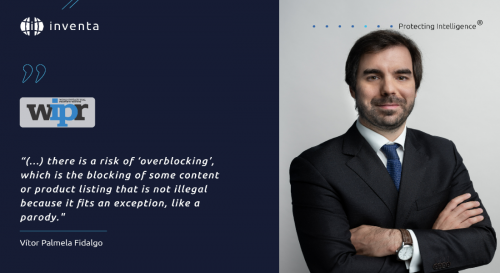
Trademarks in the metaverse
World Intellectual Property Day is celebrated on April 26 and, this year, with the theme chosen by the World Intellectual Property Organization (WIPO): “IP and Youth: innovating for a better future”. The relationship between youth and IP has at least two directions. In one direction, youth innovate and get protection through IP. In another, youth are the main addressees of IP-protected innovations. It is mainly in this direction of the relationship that the sub-theme of trademarks in the metaverse is situated.
What is the metaverse?
The creation of the term “metaverse” is usually attributed to Neal Stephenson, who may have used it for the first time in his science fiction novel Snow Crash, and the result of the mixing of the words “meta” and “universe”. This is the metaverse, a universe that is beyond something. That something is the non-digital world, so that universe is digital.
But if the metaverse was any digital space, all digital spaces would be covered by the concept, including any email service or online store. If the metaverse is a universe, then it has the capacity to replace the other universe, the non-digital one. Therefore, the metaverse must be considered a digital space in which it is possible to practice all (or almost) the activities that it is possible to practice in the non-digital universe. The metaverse, with this definition, does not yet exist. However, close realities already do.
The main examples are virtual realities such as Second Life, in which the user can do various activities, through their representation, the avatar. In this virtual reality, it is possible, for example, to buy, among other digital goods, animals, art, vehicles and clothing for the avatar.
Virtual real estate is also now a reality. In 2021, the value of digital land purchases, in places like Sandbox, Decentraland, Cryptovoxels and Somnium, exceeded 500 million US dollars, and many of these buyers hired architectural services to build their virtual properties and bought digital furniture and art to decorate them.

Other examples of approaches to the metaverse, where the largest number of users are mostly young, are games like World of Warcraft, Fortnite and Roblox. Together, these virtual spaces currently have approximately 450 million users. If they were a country, they would be the third-largest in the world by population. Taking this fact into account and since it is possible to sell goods and provide services in these digital spaces, many entities are interested in exercising their freedom of economic initiative in these spaces. To do so, entities needed signs that allow consumers to distinguish their products and services from those of other entities. That is, these entities need to use marks.
Trademarks in the “metaverse”
The use of brands in these digital spaces results in new legal situations. How can an entity protect its brand in these spaces? Can an entity that already owns a trademark registration be able to use it, without risk, in those spaces, and can it prevent third parties from using it? The answer to these and other questions results from existing law, including the terms and conditions that users accept when using these platforms and which may, eventually, provide their own mechanisms for acting against infringements.
The answer to the first question, in Portugal and in most European Union countries, is clear. Any entity that intends to be the owner of an exclusive right to use a certain brand must register it, since the right to a mark, in those jurisdictions, results from the registration. The Law is applicable to any of the aforementioned approaches to the metaverse, as it is in any digital space. If it is illegal to sell products with the registered trademark of another entity in an online store, so is the sale of those products in any virtual reality.
It is also questioned whether an entity that already owns a trademark registration will be able to use it, without risk, in those spaces, and whether it will be able to prevent third parties from using it. For example, will a trademark registered to identify clothing be protected against its use by users of these spaces to identify virtual clothing? The answer, in principle, is negative. The trademark right resulting from the registration is limited to the products and services covered by the registration and similar ones. If a trademark is registered for clothing, its protection should not cover virtual clothing, which is not clothing or a similar product, but a digital good. The answer may, however, be different if the trademark in question has the legal status of trademark with reputation. For these trademarks, the Law provides that their protection is not limited to the products and services covered by the registration, and the owner may prevent their use in relation to other products and services, provided that with their use, the third party seeks to take undue advantage of the distinctive character or reputation of the mark or could harm them.
The owner of a trademark without reputation status, as the vast majority are, intending to exploit it in these new spaces, must obtain a new registration covering digital goods or services.
This already happens. The American NIKE, despite being a trademark with reputation status, and therefore having less need to do so, intending to sell virtual products, filed, last year, for the registration of several NIKE trademarks to identify, among others, the products “Downloadable virtual goods, namely, computer programs featuring footwear, clothing, headwear, eyewear, bags, sports bags, backpacks, sports equipment, art, toys and accessories for use online and in online virtual worlds” and the services “Retail store services in relation to virtual goods, namely, footwear, clothing, headwear, eyewear sports bags, backpacks, sports equipment, art, toys and accessories for use online.” Nike also filed for the registration of NIKELAND to identify, among others, “virtual reality and interactive game services provided online from a global computer network and through various wireless networks and electronic devices,” which is currently being used to identify the sports and virtual games space within the aforementioned Roblox game.
The future
The growth of these realities that are approximations to the metaverse, in these last two years, shall have been driven by the pandemic. If physical spaces were limited, virtual spaces benefited. However, economic agents must take precautions and protect their brands properly, obtaining registrations for virtual goods and services. Despite the end of the pandemic, the trend should be the continuation of the growth of virtual spaces. In the last year, among others, in addition to the aforementioned Nike, Hyundai and Gucci were also present in Roblox and several technological companies invested in areas related to the metaverse, such as Facebook, which is now, because of that, Meta.
Territory List
There are no results for your search.
- Africa
- Algeria
- Angola
- Benin
- Botswana
- Burkina Faso
- Burundi
- Cameroon
- Cape Verde
- Central African Republic
- Chad
- Comoros
- Congo (Republic)
- Côte d'Ivoire
- Democratic Republic of the Congo
- Djibouti
- Egypt
- Equatorial Guinea
- Eritrea
- Eswatini (Swaziland)
- Ethiopia
- Gabon
- Gambia
- Ghana
- Guinea
- Guinea-Bissau
- Kenya
- Lesotho
- Liberia
- Libya
- Madagascar
- Malawi
- Mali
- Mauritania
- Mauritius
- Mayotte
- Morocco
- Mozambique
- Namibia
- Niger
- Nigeria
- Réunion
- Rwanda
- Sao Tome and Principe
- Senegal
- Seychelles
- Sierra Leone
- Somalia
- South Africa
- South Sudan
- Sudan
- Tanzania (mainland)
- Togo
- Tunisia
- Uganda
- Western Sahara
- Zambia
- Zanzibar
- Zimbabwe
- Africa (OAPI)
- Africa (ARIPO)
- Other
- East Timor
- Macao
- Maldives
- Portugal
- European Patent (EPO)
- European Union Trademark (EUTM)
- International Trademark (Madrid System)
- Patent Cooperation Treaty (PCT)




